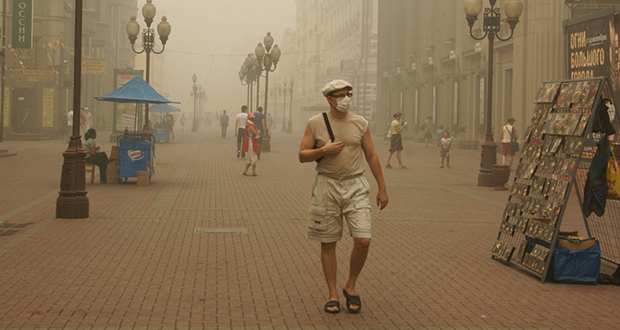21Dust devils

Dust / Dirt devils are called "djin" meaning "genie" or "devil" in Saudi Arabia, Kuwait, Kazakhstan, and Jordan. This is where the mythical genie came from and why genies are typically depicted without legs.
22Diamond dust

A weather phenomenon named "diamond dust" commonly occurs in the Arctic and Antarctic. It is often described as "clear-sky precipitation."
23Petrichor

The scent of rain is called "Petrichor", and it occurs when rain hits dry earth.
24Sprite lightning
Lightning can cause red, jellyfish-shaped flashes as big as 48 by 48 km to appear above thunderclouds. These are called sprites (air spirits), after their elusiveness, and are actually clusters of balls of plasma.
251948 Donora Death Fog

The thick toxic smog of 1948 in Donora, Pennsylvania sickened 7000 people and killed 20 people. The smog originated from a U.S. Steel plant, but they never accepted responsibility.
26Haboob

Haboobs are intense and giant dust storms that regularly occur in the dry regions of the world. They can speed up to 62 mph and cover everything you love with mud.
27Heatwave

During the 2010 Siberian heat wave, bears began to dig up cemeteries and eat human corpses.
Latest FactRepublic Video:
15 Most Controversial & Costly Blunders in History
28Hurricane Katrina

After Hurricane Katrina, Cuba and Venezuela were the first countries to offer assistance, pledging over $1 million, several mobile hospitals, water treatment plants, canned food, bottled water, heating oil, 1,100 doctors and 26.4 metric tons of medicine. This help was rejected by the US Government.
29Fire rainbows

Fire rainbows are a rare cloud phenomenon formed by hexagonal ice crystals in high-level cirrus clouds. The halo is so large that the arc appears parallel to the horizon. They are called fire rainbows because they appear like a flame.
30El Niño

The opposite of the El Niño ocean-atmosphere phenomenon is La Niña, where the surface temperature across the eastern equatorial Pacific drops by 3 to 5 °C, which can lead to intense storms in some areas and severe drought in others.



